Roof condition is an integral part of a self-storage facility’s success. An inspection and maintenance program can help sustain and extend the useful life of this component and keep costly repairs at bay. Learn about common problems and how to catch them before they become bigger ones.
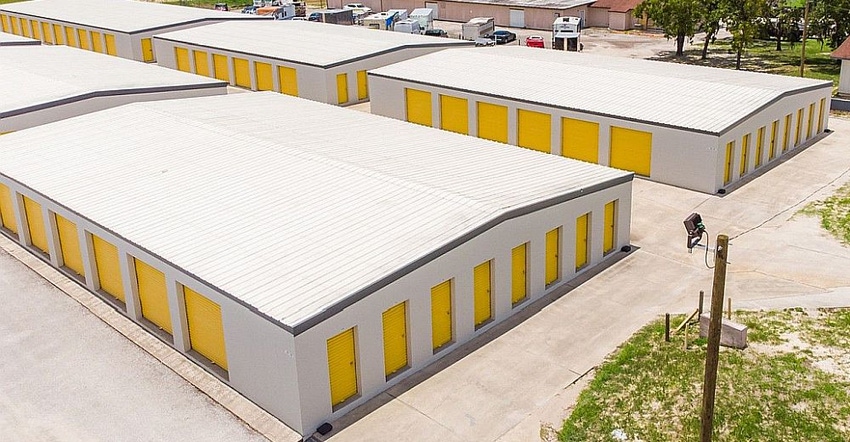
Roof condition plays a major role in the success of a self-storage property. Leaks will doom any operation, but ensuring this critical component remains well-maintained will save you money and keep tenants happy. As a roof system ages, it takes more work to preserve its integrity; but a proactive approach will minimize repairs and customer complaints.
What you need is a solid maintenance program that’ll sustain roof life and help you avoid expense and liability. Self-storage buildings can have various types of roofs including asphalt shingles, membranes, metal and built-up. With proper inspection and care, these systems can last for decades.
The Inspection
Newer self-storage roof systems should be inspected annually to capture condition documentation and remove debris. As a roof ages or leaks begin to occur, the schedule should increase to every six months. An examination is also warranted after any snow, wind or hail that may have caused damage. This is especially true if there are trees on the property, as the leaves can clog gutters or drains. Each roof is different and has its own specific needs, but a well-defined, timely inspection program will keep it watertight for decades.
Because most units on a self-storage property are usually rented, leaving the facility operator with no access, it can sometimes be difficult to detect leaks. That said, check any vacant units immediately following a significant rain. This opportunity to find unreported leaks may yield surprising results and can help alleviate complaints from customers down the road. When a leak is identified, make or arrange repairs as soon as possible.
Always keep records of your current roof condition, including photos. Often, issues will reoccur in the same areas of the system. When pursuing a leak, documentation can dramatically shorten the time it takes to find it.


A roof retrofit, before (top) and after
Potential Roof Failures
A self-storage roof can experience many kinds of failure. Below are the more common issues that can be identified during inspection and fixed before they become larger problems.
Clogged drains and gutters: The fall season can be tough on a self-storage roof. Leaves, sticks and other debris can stop the drainage and lead to immediate leaks. Bottles and other trash can also find their way into gutters and block the downspouts.
Snow and ice: Excessive loads can damage any roof system. Try to remove as much snow and ice as possible after a winter storm to eliminate or minimize damage.
Damaged finish: When trees or bushes rub against your roof, they can damage its finish and shorten its lifespan. For this reason, keep them well-pruned and remove any branches that are an issue.
Deteriorated sealant: All roofs have some caulk or other sealant applied to penetrations or termination accessories. UV rays can rapidly weaken these substances, which must then be re-applied. Pitch pockets are a prime example of an area where deterioration causes leaks.
Fastener issues: The fasteners on a metal roof or along the perimeter of a flat roof will often back out over time due to vibrations or building movement, which result from storms or thermal expansion (temperature changes). Also, the neoprene washers on a fastener often deteriorate from heat, which leads to minor leaks.
Ponding water: This is a major problem on metal roofs. Large areas of standing water will rapidly deteriorate the panels and lead to rust. For example, on standing-seam systems, water will often pool along the eaves. These areas need treatment before the rust becomes embedded and the panel must be replaced.
Damaged flashings and closures: Every roof has some type of metal flashing or closure strips to prevent water from entering the building. These are often damaged during storms and must be fixed or replaced.
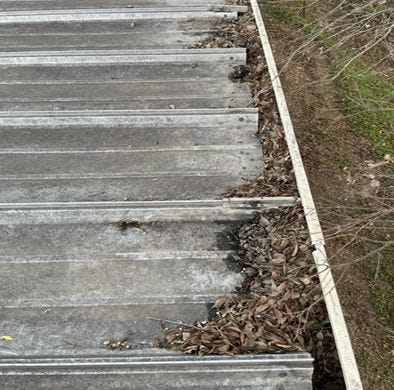
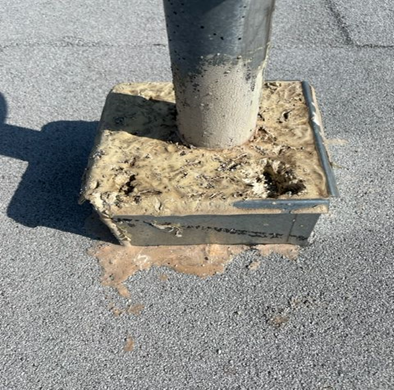
A clogged gutter (top), and weakened caulk that's been
affected by weather (bottom)
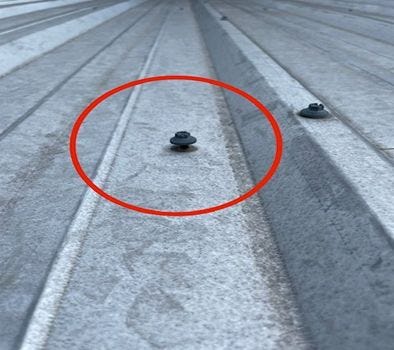
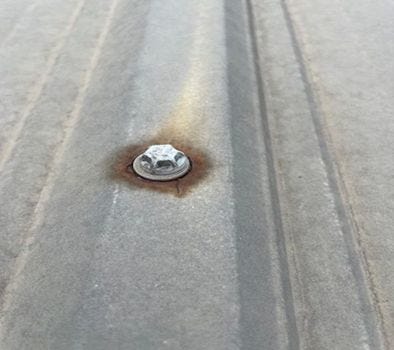
A roof fastener “backing out” (top) and a deteriorating
roof fastener (bottom)
Prevention and Cure
Ongoing roof inspections will help identify the above failures and keep your self-storage repair costs to a minimum. Many tasks such as cleaning gutters, trimming trees, caulking and removing snow are relatively simple and cheap, but the long-term benefits are huge. Larger failures such as ponding water and rust can be more expensive and require a roofing professional. Still, addressing issues quickly will help you eliminate the need for replacement.
Metal roofs with early signs of rust can be treated with an elastomeric coating to restore the system. This use of a primer and built-in rust inhibitor will eliminate future problems and prolong the useful life of the existing metal panels at a fraction of the cost of replacement. However, once rust becomes embedded into the metal, replacement will be the only option.
Ponding water deteriorates a roof system quicker than any other failure. Excessive moisture that remains on a roof for longer than 48 hours will accumulate debris and accelerate the deterioration process of flat roofs and rust on metal roofs. The installation of drains will be an immediate expense, but it’ll pay long-term benefits by extending your roof life.

Rust caused by ponding water
Once a self-storage roof is beyond repair, an overlay system is a good way to avoid exposing tenants’ contents. There are several installation options that can minimize disruption to your operation and provide energy-efficiency at a fraction of what it would cost to do a complete tear-off and replacement.

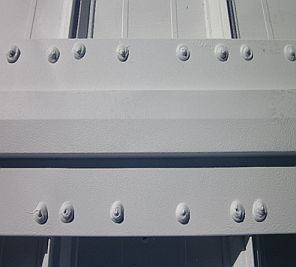
A roof restoration using elastomeric coating
Your roof is an essential part of your self-storage facility’s success. Create a schedule to regularly check the items mentioned. Be proactive. When you see a problem, fix it as soon as possible or contact your preferred roofing professional for help.
JoB LeRay is the owner of Global Roofing Co., which specializes in commercial, industrial and multi-family roofing applications throughout the Central United States. To reach him, call 214.476.3622 or email [email protected].
About the Author(s)
You May Also Like





